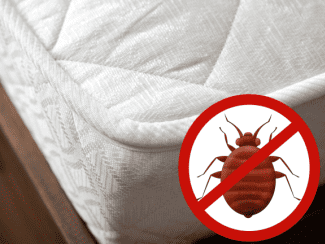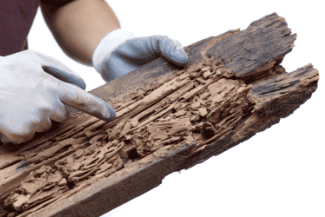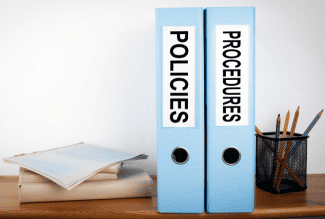Bedbugs, Roaches, Termites and Other Things That Bug You
Bedbugs were in the news last fall when infestations appeared throughout Europe, particularly in France.
Zachary DeVries, associate professor of urban entomology at the University of Kentucky, recently told Multifamily Dive that the bugs — flat, brown creatures that tend to nest in furniture and feed on human blood — “have been a consistent and steady issue in homes, apartments and hotels since their population in the country surged in the late 1990s, likely owing to an increase in international travel and restrictions on indoor insecticides.”
Bedbugs can nest anywhere, including five-star hotels and first-class airline seats, but infestations are most commonly seen in low-income housing. DeVries owes this phenomenon to the cost of removing bedbugs, especially when that burden is placed on residents.
Bed bugs feed on human blood and can cause redness, itching, and allergic reactions. They can travel from one apartment to another, making it hard to get rid of them. If the landlord is not informed of the bedbugs’ presence, the tenant may risk getting evicted for failure to maintain a clean living environment.
How to prevent the spread of bedbugs
One important thing to impress upon residents is the danger of bringing in secondhand furniture, particularly if it’s been sitting outside. “That’s probably one of the easiest ways that [bedbugs] get brought in,” DeVries said.

- Conduct regular inspections. “It’s best to first look for actual live bed bugs [first] and then signs of bed bugs such as blood stains, fecal matter and discarded exoskeletons,” Hottel said, noting that these signs could also be attributed to other insects.
- Promote cleanliness. Hottel recommends encouraging regular vacuuming and washing of bedding.
- Eliminate hiding places. This includes filling in cracks in plaster or drywall, removing wallpaper and repairing loose molding.
- Encourage residents to use special bed covers. These are designed to protect mattresses and box springs, and to make inspections and treatments easier.
It is a tenant’s responsibility to report the presence of bedbugs as soon as they are discovered. In turn, the landlord is legally responsible to quickly take appropriate measures to eliminate the bugs. They must take the issue seriously, respond swiftly and provide their other tenants with information about the bedbug infestations and their eradication since bedbugs can travel from one unit to another, making it very hard to get rid of them.
Legally, landlords are responsible for covering the costs of bedbug elimination. In some states, tenants have the right to withhold rent until the landlord fully resolves the bedbug issue. Tenants can also demand compensation from the landlord for the loss of personal belongings damaged by bedbugs or to cover any expenses incurred in temporarily relocating.
The legal and health issues roaches bring with them
By law, landlords must maintain a healthy, habitable living environment for their tenants, which includes ensuring there are no pest infestations. Neglecting to handle a roach infestation can lead to legal trouble, with tenants possibly suing for breach of contract or negligence.
In addition to their legal obligations, landlords may face code violations and fines from local health departments if they fail to keep their rental properties free of roaches. As a result of these violations, landlords may face hefty fines, legal action, and in extreme cases, property condemnation.
Paying Too Much For Insurance?
Get a FREE quote to insure your rental properties for less.
Cockroach infestation has little to do with cleanliness and mostly to do with how many are in the building. Roaches can cause many health issues for tenants, including asthma and other respiratory problems. As roaches crawl around, they tend to transport bacteria, germs, and diseases from one surface to another, including the surfaces in rental properties. They have the potential to transmit salmonella, e. coli, and other harmful bacteria, leading to food poisoning, diarrhea, and other infections. They can also trigger allergies in some people, causing sneezing, runny nose, itchy eyes, and skin reactions.
The only real method of eliminating roaches is to tent the entire building and fumigate, and landlords rarely want to do that due to the expense.
According to RentVision, if a tenant has notified their landlord of a roach infestation and the landlord fails to take corrective action within a reasonable amount of time, the tenant may be able to stop paying rent without penalty. This is known as “rent withholding,” and it is a legal option for tenants who believe their landlord has violated their right to a habitable living space.
How can I know if my rental has termites?
Termites are destructive pests that can cause significant damage to the structure of a building and can also pose health risks to its occupants. If your rental property has a termite infestation, your tenants have the right to take legal action against you.
According to Rental Awareness, termites are small, wood-eating insects that live in colonies, thrive in moist environments and feed on cellulose materials, which are commonly found in wood structures. Due to their ability to remain hidden and their insatiable appetite for wood, termite infestations can go unnoticed for long periods, causing significant damage to the infrastructure of a property.
If you want to determine whether your rental property is infested with termites, there are several signs you should look out for:

- When termites swarm, they shed their wings, which may be found near windowsills, light fixtures, or other areas where they are attracted to light.
- Termites build mud tubes to travel between their nest and food source. These tubes are typically brown or gray and can be found along walls, foundations, or other surfaces.
- Termites feed on wood, causing significant damage over time. Look out for wooden structures that sound hollow when tapped or have a honeycomb-like appearance.
- Termite droppings, also known as frass, resemble tiny wood-colored pellets. They may be found near termite tunnels or other areas infested with termites.
- Inspect the interior of your rental property. Pay close attention to areas where there is wood, such as baseboards, windowsills, door frames, and wooden furniture.
What is a landlord’s exposure with regard to infestations?
Landlords often try to blame their tenants for an insect infestation. However, an infestation of bedbugs, cockroaches or termites is not an issue to be ignored and legally you are bound to address the issue properly. If you fail to deal with the situation and/or do not compensate your tenant for the damages and losses incurred, they may file a lawsuit against you.
Per Rental Law Awareness, while the specific provisions can vary, they typically outline the duties of landlords to mitigate, control, and remediate termite infestations. Violation of these laws can result in legal consequences for the landlord.
The specific duties may vary depending on local laws and regulations, but generally, landlords are expected to:
- Maintain the property in a habitable condition, free from infestations that can affect the health or safety of the tenants.
- Conduct regular inspections to identify and address any signs of bedbug, roach and termite activity.
- Take prompt action to eradicate the insects and prevent further damage.
- Provide necessary repairs and treatments to eliminate the insects and restore the property to a habitable state.
If a landlord has been unresponsive or negligent in addressing the infestation problem, poses a risk to their tenant’s health and safety, or refuses to compensate them for damages caused by the infestation, it may be necessary for the tenant to pursue legal action.
If the landlord fails to address the bed bug infestation, the tenant may be able to terminate the lease without penalty. They can also file a complaint with the local health department or the housing authority. In some cases, tenants may need to escalate disputes to small claims courts or hire legal representation to file a lawsuit against the landlord for breach of contract.
Disclaimer: All content provided here-in is subject to AAOA’s Terms of Use. Nothing contained on this website constitutes tax, legal, insurance or investment advice, nor does it constitute a solicitation or an offer to buy or sell any security or other financial instrument. AAOA recommends you consult with a financial advisor, tax specialist, attorney or other specialist who is able to properly advise you.















 Accessibility
Accessibility